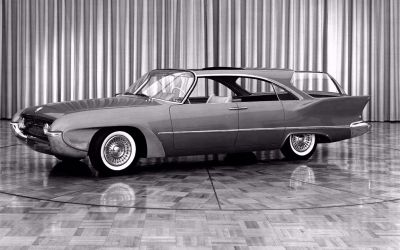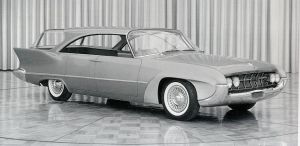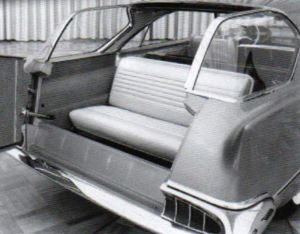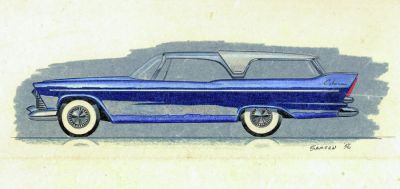Difference between revisions of "1958 Plymouth Cabana"
Old Hippie (talk | contribs) |
Old Hippie (talk | contribs) |
||
| Line 16: | Line 16: | ||
<!-- The below are the photos that line up on the right side. Use the Upload link to upload photos of this car model and replace the FilenameUploaded/description in the below --> | <!-- The below are the photos that line up on the right side. Use the Upload link to upload photos of this car model and replace the FilenameUploaded/description in the below --> | ||
| − | + | ||
| − | [[Image: | + | [[Image:58cabana-b.jpg|thumb|300px|Replace the photo file name and description with appropriate for this car model]] |
| − | [[Image:58Cabana- | + | [[Image:58Cabana-A.jpg|thumb|300px|Replace the photo file name and description with appropriate for this car model]] |
[[Image:58Cabana-c.jpg|thumb|300px|Replace the photo file name and description with appropriate for this car model]] | [[Image:58Cabana-c.jpg|thumb|300px|Replace the photo file name and description with appropriate for this car model]] | ||
[[Image:58Cabana-d.jpg|thumb|300px|Replace the photo file name and description with appropriate for this car model]] | [[Image:58Cabana-d.jpg|thumb|300px|Replace the photo file name and description with appropriate for this car model]] | ||
Revision as of 01:34, 2 January 2023
The last of the Plymouth dream cars, called the Cabana, hit the scene in 1958. The 1958 Plymouth Cabana was a station wagon concept built by Ghia on a production Plymouth chassis. It featured a very unusual roof treatment. The rear third of the roof was all-glass. It also acted as the side windows and rear windows. It also featured suicide rear side doors. Unlike Plymouth's other dream cars, it was a Pushmobile body on a rolling chassis, and not a running automobile[1].
- Body by Ghia of Turin Italy
- Production Plymouth Chassis
- 5-door wagon
- Outside length: 5486 mm / 216 in
- Width: 2032 mm / 80 in
Contents
Background
The Cabana's body was built by Ghia in Turin and placed on a production 1958 Plymouth rolling chassis using a stock torsion-bar front suspension.
The car started as a colored pencil sketch rendering by Chrysler stylist John Samsen.
The greenhouse treatment was similar to the 1956 Chrysler Plainsman dream wagon, which had its inverted-pyramid C-pillar.
Bumper and grille treatment is reminiscent of the 1956 Chrysler Dart show car. The tailfins further the Forward Look theme of late 50s.
Body was a four-door pillarless hardtop as a 5-door wagon having a skylight roof over front passengers, rear facing third row seat, but with suicide style rear passenger doors.
The Cabana is rumored to have been scrapped when it was no longer of use to Plymouth. Exact details are unknown. In fact, there's very little information exists on the car.
Background of The Exner Era Dream Cars
Quick History of Exner
In 1932, A 23-year-old Virgil Exner was hired by GM's Art and Color Studio. Boss, Harley Earl immediately recognized Exner's design talent. Two years later, Enxer was put in charge of the entire Pontiac Studio, a job he kept until 1939 when Raymond Lowry hired him to work on his studio's design contract with Studebaker. Exner worked with Lowry and Studebaker all through WWII, and when the highly advanced 47 Studebaker's were shown to the public in 1946, they were touted as "The First By Far With A Post War Car. It would be the 1949 Model year when the "Big Three" would catch up.
A dispute between Lowry and Exner over credit for the design of the 52 Studebaker caused Exner's firing. Studebaker wasn't impressed with the Lowry proposal for the 52s, and Exner showed them a design he'd been working on at home on his own time. Studebaker liked it and Lowry wanted credit for his employee's work. He was fired when he refused, but Studebaker picked Exner up for their in-house design team. There was little love between Lowry and Exner for the rest of each of their lives.
In 1949, Chrysler President K. T. Keller hired Exner away from Studebaker for the purpose of designing cars that would improve Chrysler's stodgy image. The Chrysler Corporation was well known for its engineering firsts, but not its styling. The Chrysler Corporation's "Small on the Outside - Big on the Inside" designs looked ancient when compared to the 49 Ford and GM offerings. Keller wanted the cars designed to where a man could drive with his hat on. This made the cars appear too tall.
At first Exner worked secretly on Advance Designs but was soon promoted to head the studio. The model year designs were already locked in through 1954, so Exner began work on the 1955 model, the first year of the "Forward Look" designs.
Keller and Exner agreed that they should step up Chrysler's showing of Dream Cars to compete with Harley Earl's million-dollar dream cars displayed in the Motorama shows. They felt this would create excitement with the public on updated designs that would hit the showrooms in the future. However, they would have to do it on a budget nowhere near the size GM had given Earl.
Exner and Ghia
While working on his first of the Chrysler Dream Cars, the K-310, Exner and his design team were at an impasse. On a previous trip to Italy, K. T Keller commissioned both Pininfarina and Ghia to each build a car of his loose design specs but allowed them design creativity. The purpose was not to test their design skills, but to test them for quality, fit and finish.
Knowing that the Exner team was having trouble with K-310, Keller invited the team to view the cars that had just arrived from Italy. Pininfarina had closely followed the specs, while Ghia took great liberties with their allowed creativity. Ghia's car was very impressive. The Ghia submission was also far better in quality, fit an finish than the submission from Pininfarina. It was to become the Plymouth XX-500 show car. In addition to Ghia's craftsmanship, their design abilities were a pleasant surprise.
This began the long relationship between Chrysler and Ghia, and more importantly - collaboration between their designers.
Designer
John Samsen was the designer who sketched a drawing of what he visualized a concept called the 57 Plymouth Cabana, which was never built. His drawing was used by Ghia of Turin to design the 58 Cabana.
Chassis
It is believed that the Chassis was a standard Plymouth 118" production chassis
Body
Body by Ghia
Interior
Looking for details
Drivetrain
Most feel that the Cabana was a Pushmobile, while some feel it got a production drivetrain, but just never driven.[1]
- Engine Location: Front
- Drive Type: Rear Wheel
- Body / Chassis: Unit Steel
- Motor Type:V-8
- Displacement: 5205 cc | 317.6 cu in. | 5.2 L.
- Power: 225 HP (165.6 KW) @ 4400 RPM
- Bore: 3.9 in | 99 mm.
- Stroke: 3.3 in | 84 mm.
- Compression: 9.0:1
- Main Bearings: 5
- Valvetrain: 16 OHV (2 valves per cylinder)
- Cylinder Block: Cast-iron
- Carburetor: Carter BBS 2-barrel 2644S carburetor
- Transmission: 3 Automatic
Car Shows
It is believed that this car was never shown outside the Chrysler design studios.
Movies Appeared in
None Known
Magazine Articles
Looking for where this car might have been in a magazine article
Reference & Internet Links
- MoparWeb.com | http://www.moparweb.com
- Jalopy Journal | https://www.jalopyjournal.com/forum/threads/1958-plymouth-cabana-a-space-age-grocery-getter.1085242/
- Mac's Motor City Garage | https://macsmotorcitygarage.com/station-wagon-dreams-the-1958-plymouth-cabana
- Curbside Classic | https://www.curbsideclassic.com/automotive-histories/cc-capsule-some-weird-and-wonderful-chrycorp-wagons/
- Concept Carz | https://www.conceptcarz.com/s1866/Plymouth-Cabana-Concept.aspx
- Story Cars | https://www.story-cars.com/1958-plymouth-cabana-station-wagon-concept-by-ghia
- Automobile Catalog | https://www.automobile-catalog.com/performance/1958/2648825/plymouth_cabana.html#gsc.tab=0
Random Page | Longest Wikis | Oldest Wikis | Newest Images | Newest Wikis | List of Categories | List of Every Freakin Wiki
- Register to Edit
- It takes less than 5 minutes to request registration for editing, and we try to approve within 24 hours. Click the Register Link in the Top Bar.
- MoparWiki Help
- While editing Wikis may at first glance appear a little overwhelming, it really isn't. You will find this site's HELP (link found in the sidebar) to be very strong and easy to understand. The best way to start is with small edits and working on your user page -- and you will become a Pro in no time.
FootNotes
1. Some references say the car had an engine and transmission others say it was a roller






